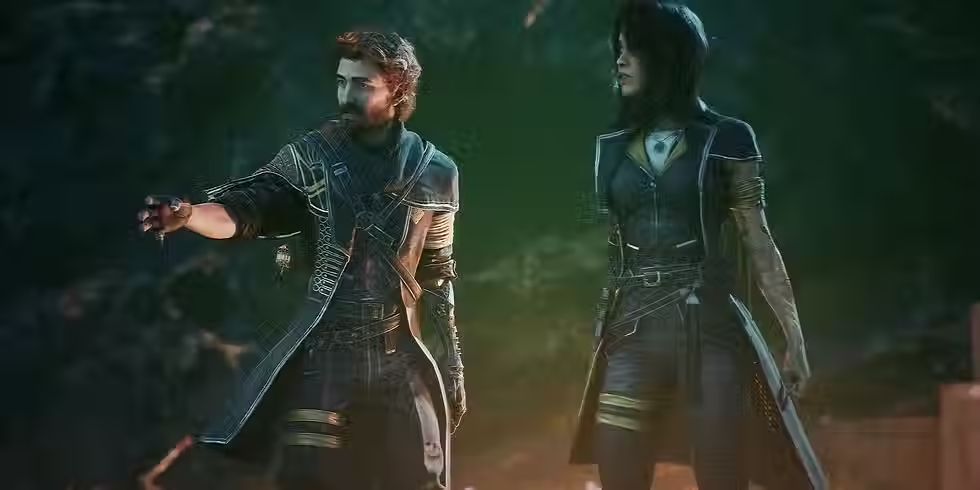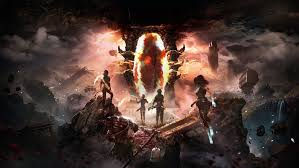Clair Obscur Expedition 33, A Review Of the Best JRPG This Year
- Igor Krivokapic
- May 14
- 4 min read
Updated: May 20

The moment you think you've seen every possible variation on the JRPG theme, something like Clair Obscur: Expedition 33 comes along—and even the title sounds like someone shook you awake from a dream you had after binging NieR: Automata and marathon sessions of Final Fantasy X.
The work of French studio Sandfall Interactive isn't just another indie attempt to break through the genre's chaos—this is a serious project, visually mesmerizing, mechanically precise, and narratively… well, dark to its core. It isn't afraid to portray the bizarre poetry of losing loved ones in JRPG packaging.
Are you unsure whether to let your kid play Minecraft or Roblox? Check out our thoughts on the matter!
The Story of Clair Obscur Expedition 33
In a world where a painter erases everyone whose name appears on her 'list' every January 1st—yes, they literally vanish from existence—you are a member of Expedition 33. So far, 32 expeditions have disappeared, and yours is the last hope to end this abstract genocide. The narrative of Clair Obscur is not just absurd and poetic, but also deeply philosophical, exploring themes of existential dread, loss, and moral conflict. This narrative depth is what sets it apart from other JRPGs.

At first glance, Clair Obscur seems like a European attempt to replicate the magic of classic Japanese RPGs—but it quickly becomes clear that Sandfall Interactive knows precisely what it's doing. The inspirations are obvious: Persona, NieR, Final Fantasy, and Valkyrie Profile—all ghosts hovering over this game.
However, there's no blind copying here—the developers use these influences as a color palette for their stunning canvas. The game's unique features, such as the 'list' that erases characters every January 1st, and the turn-based combat system that requires reflexes, not just numbers, set it apart from other JRPGs.
The Look and Feel
The visual style is simply unreal. Unreal Engine 5 is wielded like the brush of the game's painter—the world is crafted with meticulous detail, and the color palette shifts from ethereal pastel elegance to brutal, almost baroque contrasts.
The architecture resembles a steampunk Paris in ruins, while enemies look like they've crawled out of the strangest nightmares of Polish painter Zdzisław Beksiński. For comparison, I'll just say that he and Giger were close friends and contemporaries.
The Unreal Engine 5 is used with great finesse here. Beyond the technically flawless world (especially on high-end PCs or the Series X), the game uses lighting, volumetrics, and textures to create a sense of existing on the border between reality and dreams. The soundtrack is another major plus—orchestral arrangements ranging from melancholic piano themes to bombastic battle tracks that sound like a collaboration between Yoko Shimomura and Olivier Derivière. The audio design in combat, especially spell effects and parries, adds another dimension to everything, especially listening on our XP-Panther Blossom headset.
The performance is stable, though the early version had minor camera glitches in tight spaces. Thankfully, most were ironed out with a day-one patch.
The Gameplay of Clair Obscur
The turn-based combat in Clair Obscur is not your standard JRPG fare. It's a breath of fresh air, using a system reminiscent of Legend of Dragoon and Paper Mario, where the timing of moves actively affects the outcome—attacks, blocks, and parries require reflexes, not just numbers. This means no battle plays out passively, even when you're overleveled. It's a touch of poetry and dance, but with molten lead and magic instead of music.

Each party member has unique roles, and builds can be developed and customized to fit your playstyle. There's no unnecessary grinding, which is refreshing. Instead, the game forces you to think tactically—using the right spells at the right time, shifting positions, knowing when to go all-in and fall back, and playing defensively. Bosses aren't just damage sponges—they have phases, psychology, and dramaturgy. At one point, you fight an entity that erases your attacks from the menu if you don't carefully read its indicators. In other words, you're not just a player, but a participant in a performance.
Not Your Standard JRPG
Clair Obscur doesn't offer standard JRPG melodrama. Here, every line of dialogue is carefully written, every character wears their trauma like a medal, and every scene has layered meaning. Themes of death, oblivion, and identity are woven throughout, from the narrative to the level design, providing a mature and intellectually stimulating experience.
The protagonist isn't a classic "chosen hero"—they know they're part of a cycle likely doomed to fail. The rest of the team doesn't function as JRPG trope party members—instead, every character is introspective, complex, and often in moral conflict. Some try to rationalize their actions, while others crack under pressure.
The dialogue is written with rare maturity, and the voice acting (in both French and English) elevates everything further. Particularly effective is the occasional second-person narration that cuts into the player's perception, as if someone in the shadows is commenting on your moves.
In Conclusion

This title is an artistic JRPG that won't sit well with everyone. There's no instant gratification, no loot raining from the sky, and forget about modern fast travel. But if you're looking for an RPG that makes you think, feel, and emerge from the melancholic campaign yet emotionally enriched, this is the game for you.
While some may criticize its occasionally heavy-handed narrative moments or philosophical overemphasis, these are more like character traits than flaws. This game knows what it is and isn't afraid to be—strange, deep, and "curious."
For those who grew up on JRPG classics, you're holding something worthy of your time—a blend of old and new. This is a lesson to other studios that sometimes it's good to return to your roots and embrace your actual audience.
Clair Obscur isn't for everyone, especially in an era when we supposedly know the tastes of modern audiences, but for those who know what they're looking for, it's a true treasure!
Rating & Reason:
9.5/10 – A masterfully crafted JRPG with breathtaking visuals, deep tactical combat, and a hauntingly poetic narrative, though its philosophical weight and deliberate pacing may not appeal to all.
Recommended Age Group:
16+—Due to its mature themes (existential dread, loss, moral conflict) and complex storytelling, it's what makes Clair Obscur best suited for older teens and adults who can appreciate its depth. It has an ESRB rating of M17, and we kind of agree.
